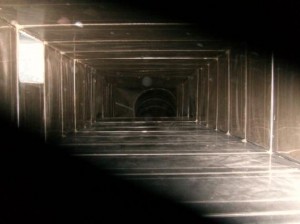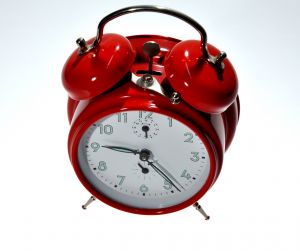 Air pathways are a key component of indoor air quality. Understanding and improving air pathways will greatly improve your indoor air quality.
Air pathways are a key component of indoor air quality. Understanding and improving air pathways will greatly improve your indoor air quality.
Understanding Air Pathways
Air flow is created by pressure differentials. Air flow always flows from higher relative pressure to lower relative pressure. Air will flow through any available opening (pathway) in an attempt to equalize pressure. Pathways include windows, doors, electrical outlets, floor drains, heating and cooling systems, and most importantly air ducts.
Air Pathways within a Home
A forced air system works by creating a difference in pressure between the area where the supply registers are located and the area where the returns are located. As air moves from supply diffuser to return air grill, it is diverted or obstructed by partitions, creating pathways of air movement throughout the home.
How do Air Pathways affect a Home?
Pathways can change from one minute to the next – Opened windows, an exhaust fan, open/closed doors etc… Unintended pathways need to be acknowledged to have a comprehensive understanding of a homes airflow patterns.
Improving Air Pathways
Air ducts are the pathways for energy efficient homes. With a couple of simple steps you can improve your air pathways.
- Seal the air ducts to prevent costly, conditioned air flow from being drawn from or escape into unknown, unspecified, or unintended areas of the home.
- Filter the air by changing the furnace or air conditioning air filter.
- Make sure that air ducts are not blocked by interior furnishings that prevent their designed use.
- Have the air ducts cleaned to prevent obstructions in air flow.
- Use bathroom exhaust fans when using the shower to exhaust moisture.
- Use kitchen exhaust fans when cooking to exhaust fumes from cooking.
- Have your HVAC technician inspect exhaust flues when they perform annual HVAC inspections to ensure carbon monoxide is properly exhausted.


 Several factors contribute to poor indoor air quality that can be easily controlled. Air pressurization greatly affects the indoor air quality of a home or building.
Several factors contribute to poor indoor air quality that can be easily controlled. Air pressurization greatly affects the indoor air quality of a home or building. While you will never be able to completely rid your home of dust. Here are 10 great tips to reduce the amount of dust and other allergy-aggravating particles from your home.
While you will never be able to completely rid your home of dust. Here are 10 great tips to reduce the amount of dust and other allergy-aggravating particles from your home. Air ducts are used to distribute air through out a building, or to exhaust air outside of a building. The most common are: sheet metal, fiberglass lined, fiberboard, and flex-line air ducts.
Air ducts are used to distribute air through out a building, or to exhaust air outside of a building. The most common are: sheet metal, fiberglass lined, fiberboard, and flex-line air ducts. Air conditioning units require regular maintenance to keep them working at an optimal level. Follow these guidelines to ensure your air conditioner is working efficiently.
Air conditioning units require regular maintenance to keep them working at an optimal level. Follow these guidelines to ensure your air conditioner is working efficiently. You may have heard about having your air ducts cleaned, but how do you know if you need to? Here are a few tips to help you decide if the time is right for you to clean you air ducts.
You may have heard about having your air ducts cleaned, but how do you know if you need to? Here are a few tips to help you decide if the time is right for you to clean you air ducts. All dust can be a fire hazard and regular household dust is no exception. Help keep your home safe by cleaning air ducts and preventing an accumulation of dust.
All dust can be a fire hazard and regular household dust is no exception. Help keep your home safe by cleaning air ducts and preventing an accumulation of dust. Pet Dander is one of those microscopic particles found in many homes that can cause allergic reactions and trigger asthma. Here is some more information about pet dander and what you can do to reduce the amount of it in your home.
Pet Dander is one of those microscopic particles found in many homes that can cause allergic reactions and trigger asthma. Here is some more information about pet dander and what you can do to reduce the amount of it in your home. To keep your heating bills low, you need to keep your furnace running efficiently. Here are 5 tips to keep your furnace working at peak performance.
To keep your heating bills low, you need to keep your furnace running efficiently. Here are 5 tips to keep your furnace working at peak performance. Keeping air ducts clean can help keep indoor air quality healthy. Follow these simple tips to reduce dust and other build up in your air ducts.
Keeping air ducts clean can help keep indoor air quality healthy. Follow these simple tips to reduce dust and other build up in your air ducts.